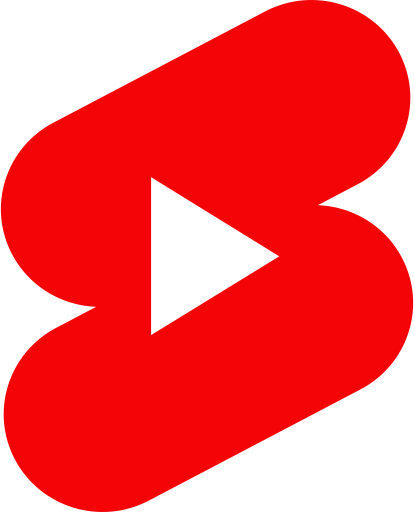Organic Vs Paid Marketing: Which Brings The Best Results?
- •What Is Organic Marketing?
- •Key Tools for Organic Marketing:
- •What Is Paid Marketing?
- •Key Tools for Paid Marketing:
- •Key Differences Between Organic and Paid Marketing
- •Benefits of Organic Marketing
- •Benefits of Paid Marketing
- •Which Strategy Should You Choose?
- •How to Combine Organic and Paid Marketing
- •Final Thoughts
Marketing strategies have evolved significantly in recent years, with brands relying on both organic and paid approaches to build visibility, drive engagement, and boost sales. While both strategies aim to achieve the same goals, the methods, costs, and outcomes are vastly different.
For businesses navigating this space, it’s essential to understand how organic and paid marketing differ — and how they complement each other. From social media monitoring to influencer tracking, these strategies play a critical role in optimizing your campaigns and maximizing ROI.
In this blog, we’ll break down the core differences between organic and paid marketing, explore the pros and cons of each, and help you decide which strategy works best for your business.
What Is Organic Marketing?
Organic marketing refers to marketing activities that attract customers naturally, without the use of paid advertising. It’s all about building brand awareness, trust, and authority over time. Organic marketing relies on content, SEO, social media engagement, and relationship-building rather than paid ads.
Examples of Organic Marketing:
- Blog posts that rank on Google via SEO
- Social media posts that generate likes, comments, and shares naturally
- User-generated content (UGC) where customers promote your brand
- Email newsletters with valuable information or promotions
- Guest posts, interviews, and PR mentions on reputable websites
Organic marketing relies on consistency and patience. Since it doesn’t involve direct payment for promotion, it tends to be a more sustainable long-term strategy.
Key Tools for Organic Marketing:
- SEO tools like Google Analytics, Ahrefs, and SEMrush for content optimization
- Social media monitoring tools to track brand mentions and identify engagement opportunities, such as Shortimize
- Email marketing platforms like Mailchimp or Klaviyo for sending newsletters
What Is Paid Marketing?
Paid marketing involves paying for visibility. Instead of waiting for customers to find your brand naturally, you’re actively promoting your content to a targeted audience. Paid marketing allows for quick results and precise audience targeting.
Examples of Paid Marketing:
- Pay-per-click (PPC) ads on Google, Bing, or YouTube
- Social media ads on Facebook, Instagram, TikTok, or LinkedIn
- Paid sponsorships or collaborations with creators and influencers
- Display ads that appear on websites or apps
- Paid email campaigns sent through third-party platforms
Unlike organic marketing, paid marketing provides faster visibility and allows brands to target specific demographics, behaviors, and interests. This makes it ideal for short-term campaigns, product launches, or seasonal promotions.
Key Tools for Paid Marketing:
- Ad platforms like Google Ads, Facebook Ads Manager, and TikTok Ads
- Influencer tracking tools to measure the performance of paid creator partnerships
- Analytics platforms like Google Analytics and HubSpot for measuring ROI and ad performance
Key Differences Between Organic and Paid Marketing
| Criteria | Organic Marketing | Paid Marketing |
| Cost | No direct cost, but time and resources are needed | Direct cost for ad placements, influencer fees, etc. |
| Speed of Results | Slow, takes time to build momentum | Fast, often delivers immediate results |
| Content Lifespan | Long-term (evergreen) | Short-term, dependent on ad budget |
| Audience Reach | Limited by algorithms and follower count | Can target specific audiences directly |
| Control | Limited control over reach and visibility | Full control over ad placement and targeting |
| Trust Factor | Seen as authentic and credible | May be viewed as “salesy” or intrusive |
| Scalability | Harder to scale quickly | Easily scalable with larger budgets |
These differences highlight how organic and paid marketing have distinct strengths. Organic marketing builds trust and authority, while paid marketing allows for rapid visibility and precise targeting.
Benefits of Organic Marketing
- Cost-Effective
Organic marketing requires minimal financial investment. While it takes time and effort, the content you create (like blogs or social media posts) can continue generating traffic and engagement for months or even years. - Builds Long-Term Trust
People tend to trust organic content more than paid ads. Ranking high in search engines or being featured in organic social media posts signals that your brand is credible and valuable. - Sustainable Over Time
Organic marketing efforts (like SEO) have long-term benefits. Blog posts and YouTube videos can continue to drive traffic long after they’re published. - Attracts High-Intent Customers
SEO-driven traffic often includes people actively searching for solutions, making them more likely to convert into customers.
When to Use Organic Marketing
- When building brand awareness
- When you want to increase your website’s SEO rankings
- When you’re focused on long-term results rather than immediate ROI
Benefits of Paid Marketing
- Faster Results
Unlike organic methods, paid marketing can deliver results almost instantly. Launch a PPC campaign, and you’ll see traffic within minutes. - Advanced Targeting Capabilities
With tools like Facebook Ads Manager, you can target people by demographics, location, interests, and even their previous website activity. - Scalability
With a larger ad budget, you can easily scale up paid campaigns to drive more traffic and conversions. The only limitation is your budget. - Ideal for Short-Term Campaigns
Product launches, flash sales, and seasonal promotions benefit from paid marketing, as it can drive instant traffic and conversions.
When to Use Paid Marketing
- When you need fast, measurable results
- When launching new products, services, or promotions
- When you need precise audience targeting
Which Strategy Should You Choose?
The short answer? Both.
Organic marketing and paid marketing work best when used together. Here’s why:
- Start with organic marketing to build a foundation of trust, SEO authority, and long-term visibility.
- Use paid marketing to boost short-term results, scale visibility, and promote new products or campaigns.
Here’s how the two approaches complement each other:
- Organic social media posts build engagement, while paid social ads increase reach.
- SEO-optimized blog posts bring in search traffic, while Google Ads capture users at the bottom of the sales funnel.
- Influencer-generated UGC can be repurposed into paid social ads to boost visibility.
How to Combine Organic and Paid Marketing
- Run Paid Ads for Top-Performing Organic Content
If an organic blog post, social media post, or video performs well, amplify it with paid ads to reach a larger audience. - Retarget Organic Visitors with Paid Ads
Use retargeting ads to follow website visitors across platforms. This keeps your brand top-of-mind and increases conversions. - Boost UGC and Influencer Content
User-generated content from loyal customers or influencers can be repurposed into paid ads, making it feel more authentic to viewers. - Track Performance with Analytics
Use tools like Google Analytics and Facebook Pixel to track the combined impact of organic and paid marketing efforts.
Final Thoughts
Organic and paid marketing aren’t “either-or” strategies — they’re two sides of the same coin. Organic builds credibility and brand loyalty, while paid marketing drives fast, targeted traffic. Both play a crucial role in brand growth, and when combined, they deliver exponential results.
With tools for social media monitoring and influencer tracking, you can refine both approaches for maximum impact. Use organic marketing to build brand trust and SEO, then supercharge those efforts with paid ads when speed and visibility matter most.
 TikTok,
TikTok, Reels, and
Reels, and Shorts
Shorts